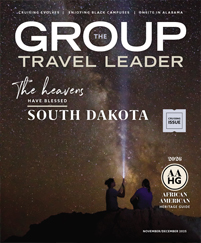After a visit to the Territorial Capitol Museum in Lecompton, you’ll probably never forget the story of Bleeding Kansas.
The battle over slavery that was waged in the border areas between Missouri and the Kansas Territory in the mid-1800s left a permanent mark on two states, and visitors will encounter some dramatic tales about the conflict when they visit Kansas’ historic sites.
The story of Kansas goes far beyond this conflict to include some fascinating people and places from regional and national history, and the state offers history buffs no shortage of sites to see, among them territorial government buildings, a famous Army installation and a home that entertained presidential visitors.
Territorial Capitol Museum
Lecompton
The small eastern Kansas town of Lecompton was once the capital of the Kansas Territory. When violence erupted over whether Kansas would enter the Union as a slave state or a free state, much of it took place in the areas around Lecompton.
Today, groups can visit the Territorial Capitol Museum in town, where exhibits detail the territory’s history. Artifacts such as cannonballs, bullets and rifles help to illustrate the Bleeding Kansas conflict.
The staff and volunteers at the museum also put on a dramatic presentation of a historic town-hall meeting for groups.
“We perform a play called ‘Bleeding Kansas,'” said Paul Bahnmaier, president of the Lecompton Historical Society. “All of the characters are historical, and they all actually lived here. The audience is divided into the North and the South, and they’re encouraged to be vocal like they would have been in that day.”
During the play, presenters from both sides give short speeches arguing their political points. Some of the speakers are well-known historical figures or politicians; others are common townspeople. One particularly moving speech is from a grieving widow, whose husband and sons were killed by slavery supporters just to make a point.
History buffs will also enjoy visiting Lecompton’s Constitution Hall State Historic Site, where pro-slavery supporters drafted a state constitution that failed to pass by only eight votes.
Fort Leavenworth
Leavenworth
Fort Leavenworth has been an instrumental part of the history of eastern Kansas, having served as a training center for military officers for decades.
“The fort precedes the city by a number of years,” said Leavenworth city guide Dick Wright. “It got started in 1827. In 1881, the command and general staff college was founded to train officers. Every major in the army has to train at this college.”
If everyone remembers to bring a driver’s license to pass the security checkpoint, groups can tour the fort and see a number of historic sites, including the college and 1870s-era homes where Colin Powell, David Petraeus and other famous generals have lived.
Powell was instrumental in the creation of the Buffalo Soldier Calvary monument at the fort, which features a large sculpture of a mounted cavalry officer and the busts of several individual African-American soldiers.
Another highlight is the Frontier Army Museum, which has displays and artifacts detailing the history of the fort and its role in various world events. Visitors will see cannonballs, uniforms, weapons and a number of interesting carriages and vehicles, including an original Conestoga wagon, a carriage that carried Abraham Lincoln during a presidential campaign and an 1872 sleigh used by Gen. George Custer.
William Allen White State Historic Site
Emporia
Although William Allen White was a small-town newspaper editor in Kansas during the late 1800s and early 1900s, many U.S. presidents knew him well. A newspaper owner and editor in Emporia, White was a personal friend of seven U.S. presidents; he advised six of them, and five visited him at his Kansas home.
Today, that home is the William Allen White State Historic Site. The red sandstone house, built in the 1880s, became a public museum in the mid-1990s, 100 years after White’s family first moved in.
“One of the big attractions is that 90 percent of the stuff in the house was owned by the Whites,” said site administrator Nick Gronseth. “Everything is set up as it would have looked in the 1920s.”
The house features a number of notable antiques and other items, such as a set of 400-year-old dining room chairs that belonged to the Medici family from Italy. In an upstairs bedroom, visitors will see the skin and head of a jaguar that Theodore Roosevelt shot and presented to White as a gift.










